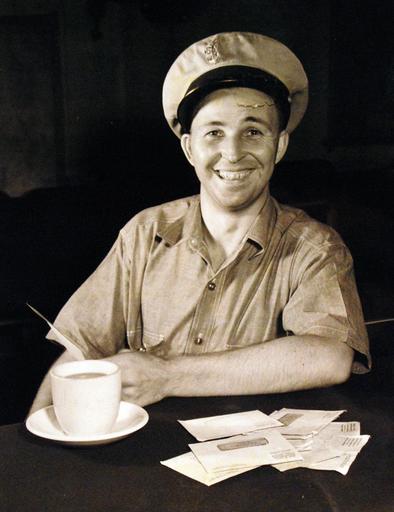MAKE A MEME
View Large Image

| View Original: | 80-CF-836-21-2.jpg (2166x2818) | |||
| Download: | Original | Medium | Small | Thumb |
| Courtesy of: | www.flickr.com | More Like This | ||
| Keywords: people black background indoor 80-CF-836-21-2: V-Mail, February 23, 1943. American troops everywhere have more mail. The easiest, fastest, and best way to send it to them is to use V-Mail. Your letters are then microfilmed, flown overseas, and distributed in a much shorter time than they would be if you used regular mail. By using V-Mail when writing to Americans on the fighting fronts, you not only save time in transportation, but you also free vital cargo space on merchant ships. The record “catch” of V-Mail in any one mail delivery on board USS Enterprise (CV 6) is held by Arnold I. Holden, a Chief Water Tender. Holden received ten V-Mail letters on March 24th, when the ship lay at anchor in the harbor of an advanced Southwest Pacific base. Photographed by PhoM/2C B.W. Manchrzak. U.S. Navy Photograph, now in the collections of the National Archives. (2016/05/03). 80-CF-836-21-2: V-Mail, February 23, 1943. American troops everywhere have more mail. The easiest, fastest, and best way to send it to them is to use V-Mail. Your letters are then microfilmed, flown overseas, and distributed in a much shorter time than they would be if you used regular mail. By using V-Mail when writing to Americans on the fighting fronts, you not only save time in transportation, but you also free vital cargo space on merchant ships. The record “catch” of V-Mail in any one mail delivery on board USS Enterprise (CV 6) is held by Arnold I. Holden, a Chief Water Tender. Holden received ten V-Mail letters on March 24th, when the ship lay at anchor in the harbor of an advanced Southwest Pacific base. Photographed by PhoM/2C B.W. Manchrzak. U.S. Navy Photograph, now in the collections of the National Archives. (2016/05/03). | ||||